
Choosing the right APM tool is critical. How do you know which is the right one for you? Here are the top 13 open source application performance monitoring(APM) tools which can solve your monitoring needs.

What is an open source APM tool?
APM stands for Application Performance Monitoring. APM tools help you to monitor your application for any performance issues. When you opt for an open source APM tool, you get the added advantage of having access to the tool's source code. You can host the tool within your infra to adhere to data governance and privacy regulations.
Open source APM tools have added benefits over their SaaS counterparts. Open source tools are more transparent as you can verify its source code, and you can use it without going through the pains of taking approvals usually required for using a third-party vendor tool.
Benefits of Open Source APM tool over SaaS APM tools:
But first, let's understand what is application performance monitoring and why is it needed?
What is application performance monitoring(APM)?
Application performance monitoring is the process of keeping your app's health in check. APM tools enable you to be proactive about meeting the demands of your customers. Some of the top metrics that APM tools monitor are application latency, error rate, and requests per second.
Why is application performance monitoring(APM) needed?
A robust APM tool can provide your engineering teams the much-needed visibility and context into the inner workings of your application. Modern distributed systems have enabled scale at a global scale but at the same time have increased the complexity of an application.
A few essential APM benefits in solving performance issues are as follows:
List of top 13 open source APM tools in 2024
Top Open Source APM Tools
Now let's explore the top 13 open source APM tools in 2024.

SigNoz is a full-stack open source APM and observability tool. It provides logs, metrics, and traces under a single pane of glass. It is built to support OpenTelemetry natively, and uses Clickhouse - a powerful OLAP database for faster ingestion and aggregations.
SigNoz has most features that vendors like Datadog offers. The feature set covers capabilities across the three telemetry signals: logs, metrics, and traces. You can monitor APM metrics like user requests for each of your applications, error rate, app latencies, etc.
Using distributed tracing, you can identify the root cause of performance issues. The logs tab in SigNoz comes with advanced query builder, multiple compact views, and live tail logging.
Open Source license and Cloud Option
SigNoz Open Source is free to use. You can get started with the open source by using Docker, Docker Swarm or Kubernetes. You can find the instructions to self-host SigNoz here.
Signing up for SigNoz cloud gives you the most easiest way to get started with SigNoz. The cloud version gives you access to some paid-only features as well as customer support. SigNoz can help you save up to 86% of your Datadog bill. Here's a pricing comparsion with detailed spreadsheet.
Graphite is a time-series monitoring tool that was released in 2008. Graphite consists of three software components:
The primary purpose of Graphite is to store numeric time-series data and render graphs of this data. Time-series data is a sequence of data points for a particular metric indexed over time. It can give you insights into the performance of any application, process, or service.
Graphite does not do data collection. Instead, your app needs to be configured to send data to Graphite which passively listens for data using Carbon - a Twisted daemon. Carbon then sends the data to Whisper to store the time-series data to a filesystem.
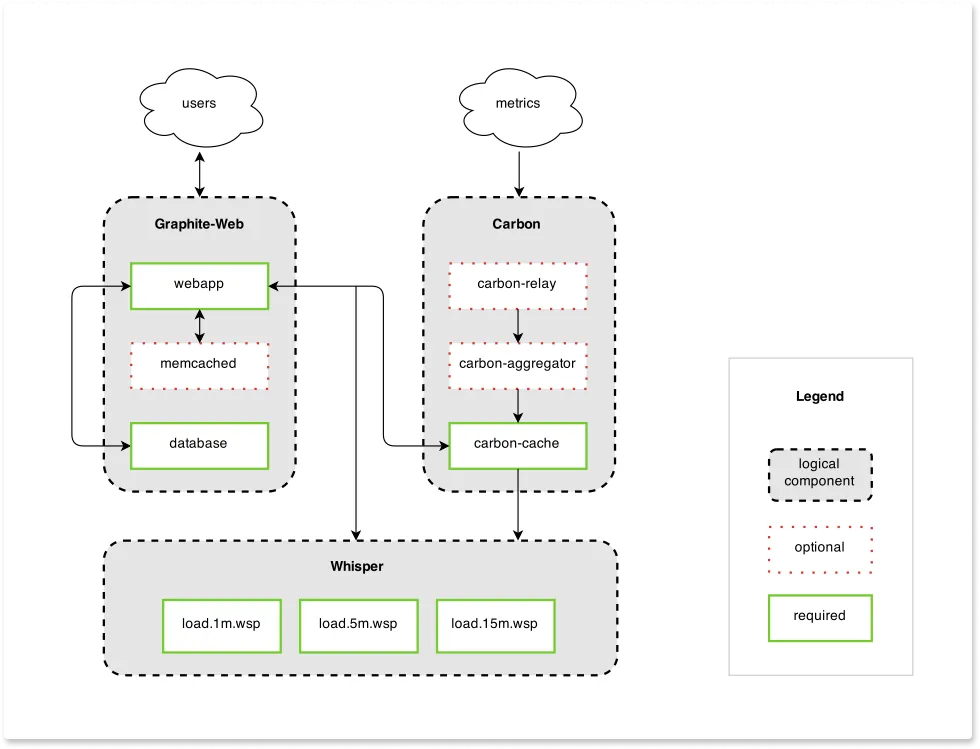
Graphite comes with an in-built UI, but that is fairly basic. Usually, for visualizations, Graphite is clubbed together with Grafana, which is an open source visualization tool.
Pinpoint is an open source APM tool meant for large-scale distributed systems written in Java, Python, or PHP. This project is inspired and modeled after Google's Dapper. It traces transactions across different components of an application and provides insights to identify potential issues. Some of the key features of the Pinpoint APM tool includes:
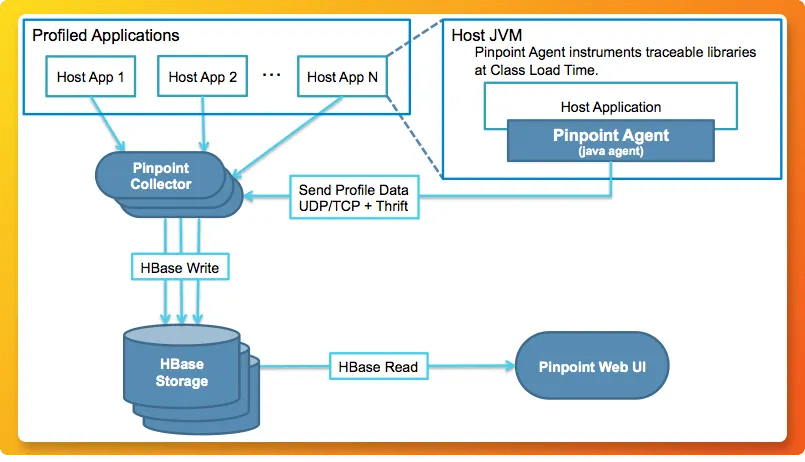
The main purpose of the Pinpoint APM tool is to identify and track how transactions flow between different components of a system. It does not track logs and metrics.
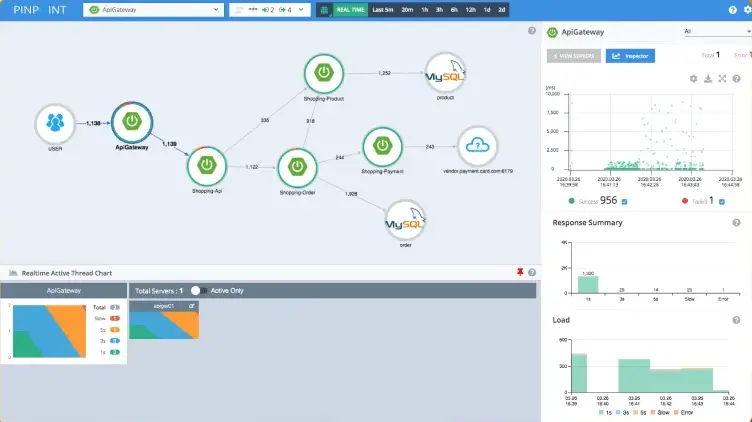
Prometheus enables you to capture time-series data as metrics. These metrics can be aggregated to give insights into the behavior of our systems.
It was initially developed at SoundCloud in 2012 before being released as an open-source project. It was the second project to graduate from CNCF after Kubernetes.
Prometheus monitoring stack includes the following components:
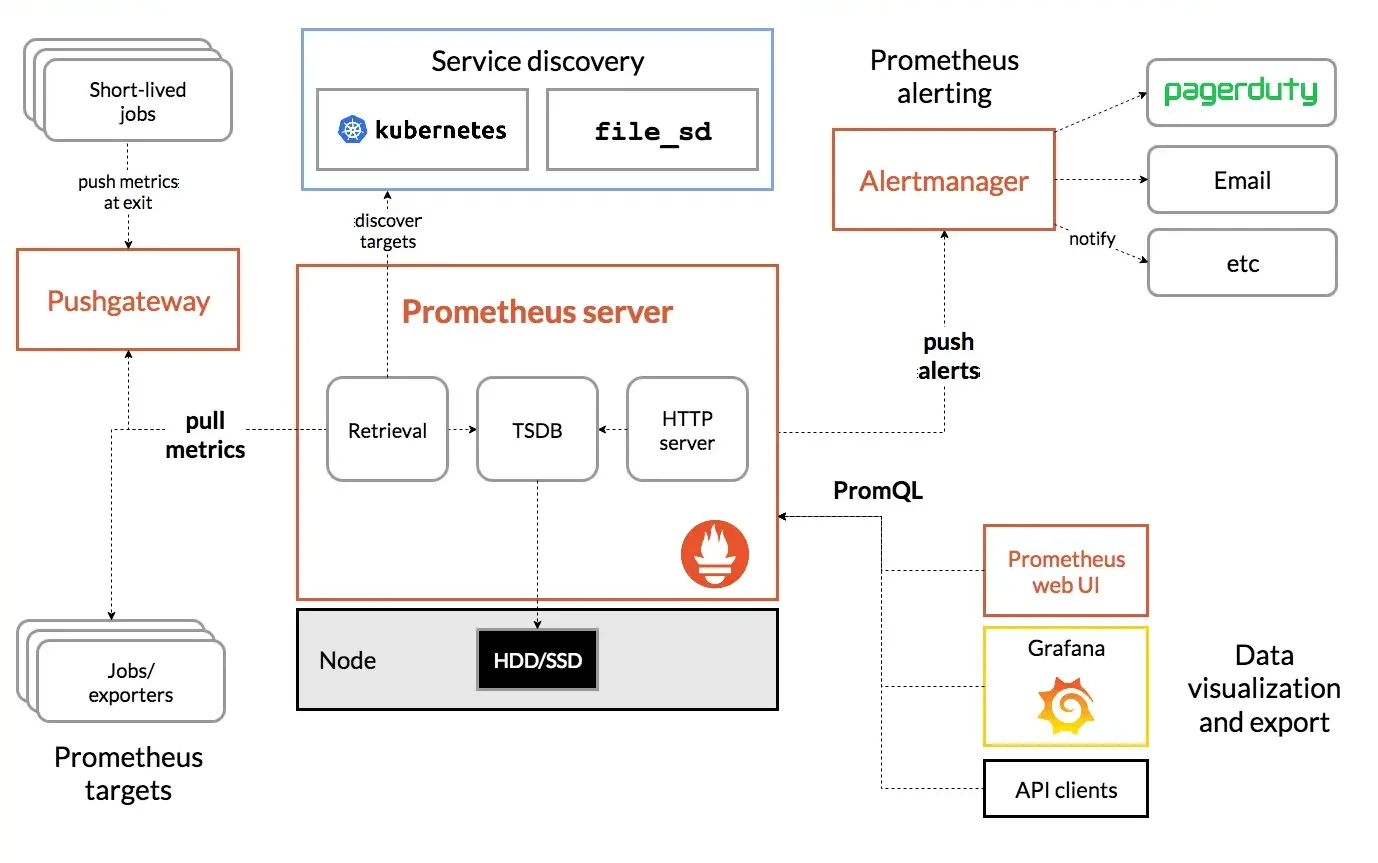
Prometheus does not do distributed tracing but can be used effectively to monitor time-series data as metrics. It also has some limitations at scale as it is designed for a single machine. The visualization layer of Prometheus is basic, but it is generally used with Grafana, a visualization tool to create charts and graphs.
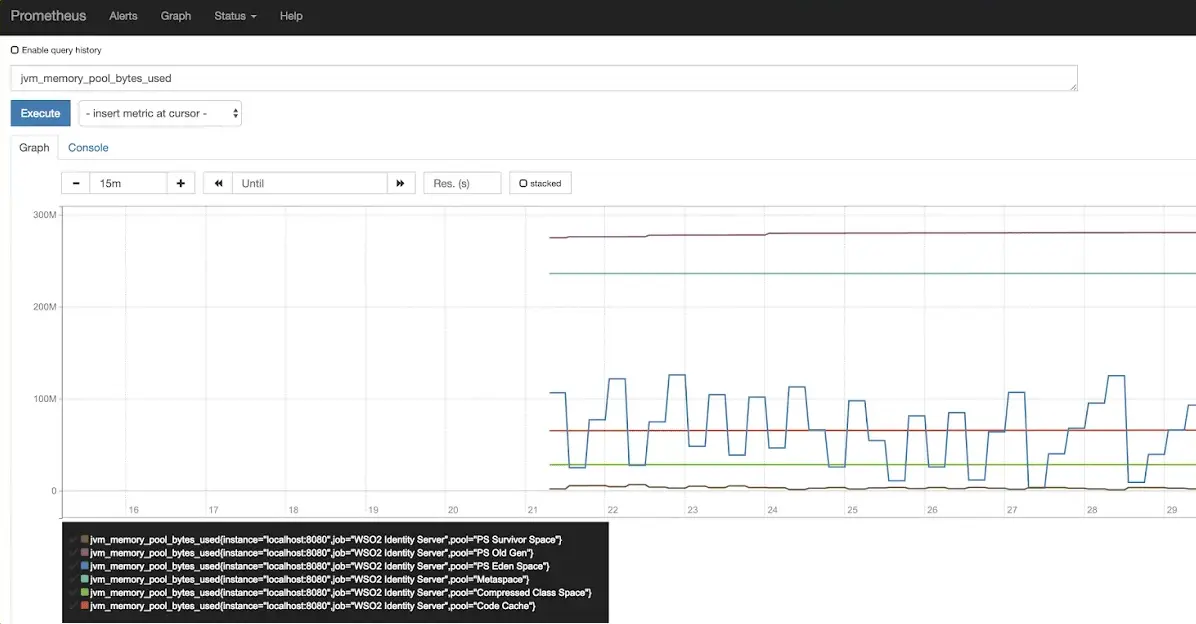
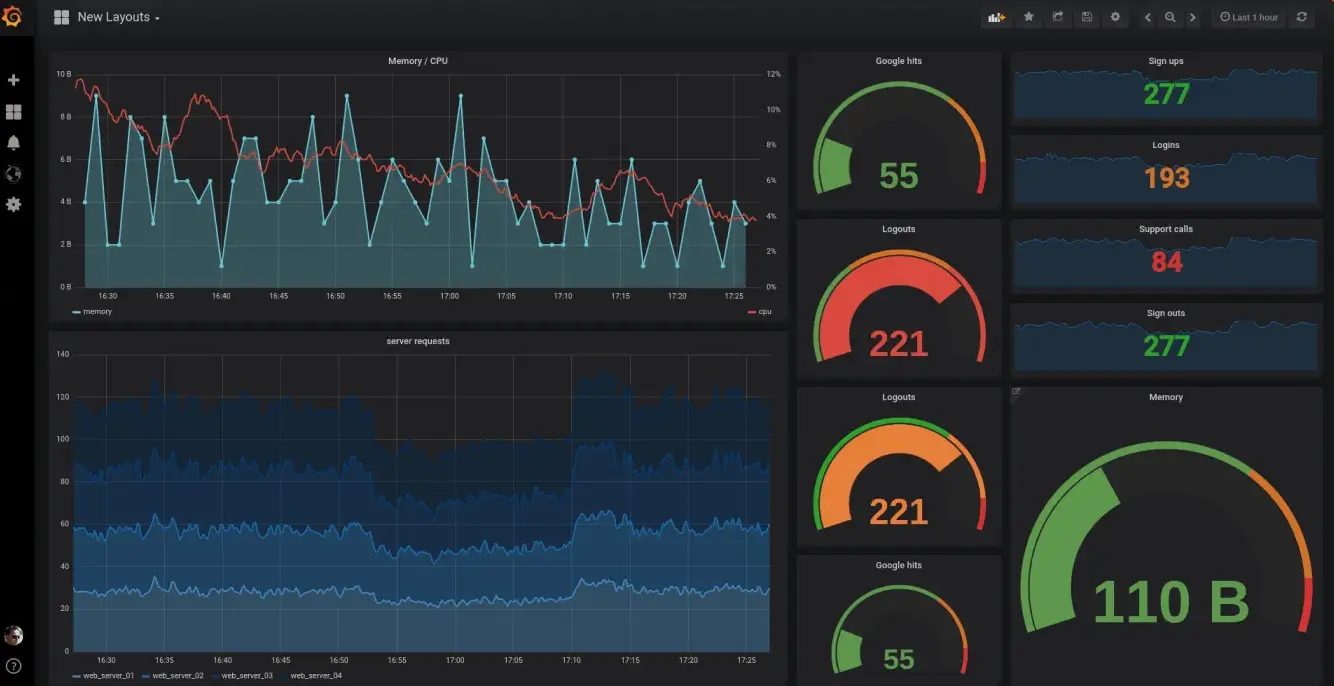
Javamelody is an open source APM tool that aims to monitor Java or Java EE applications in QA and production environments. It is mainly used to track and measure the statistics of requests on an application based on its usage.
Some of the key metrics captured by the Javamelody APM tool are as follows:
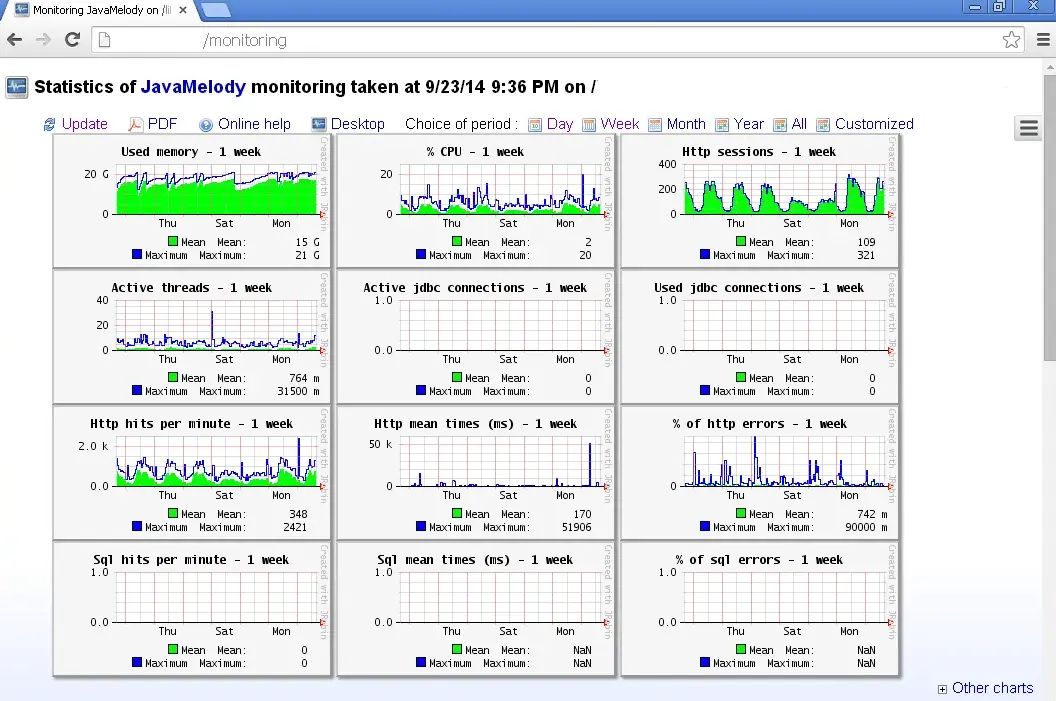
Stagemonitor is an open source APM tool for Java server applications. It enables you to monitor the performance of your Java web app throughout its lifecycle in development, QA, and production. It monitors applications with the help of servlet filters and bytecode manipulation.
Stagemonitor integrates well with time-series databases like ElasticSearch, Graphite, and InfluxDB to analyze graphed metrics and Kibana to analyze requests and call stacks.
Some of the key features of Stagemonitor APM tool includes:
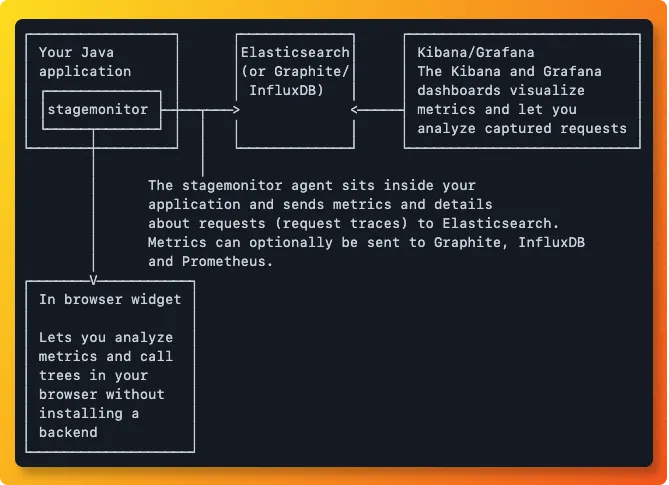
Scouter is an open source APM tool written in Java, Javascript, and Scala. It captures and shows metrics about users, services, and resources. Some of the key metrics that Scouter captures:
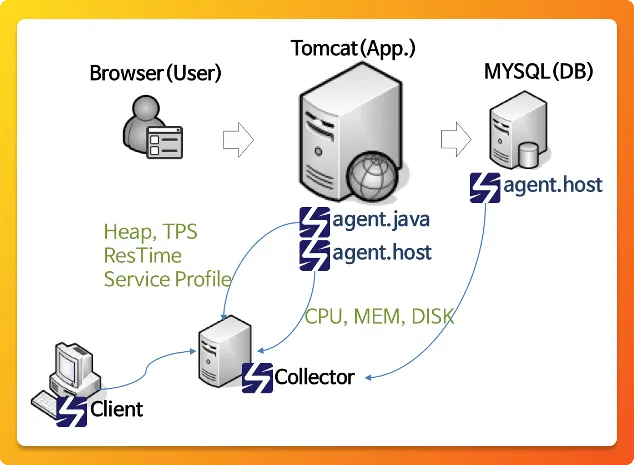
Scouter's architecture consists of the following components:
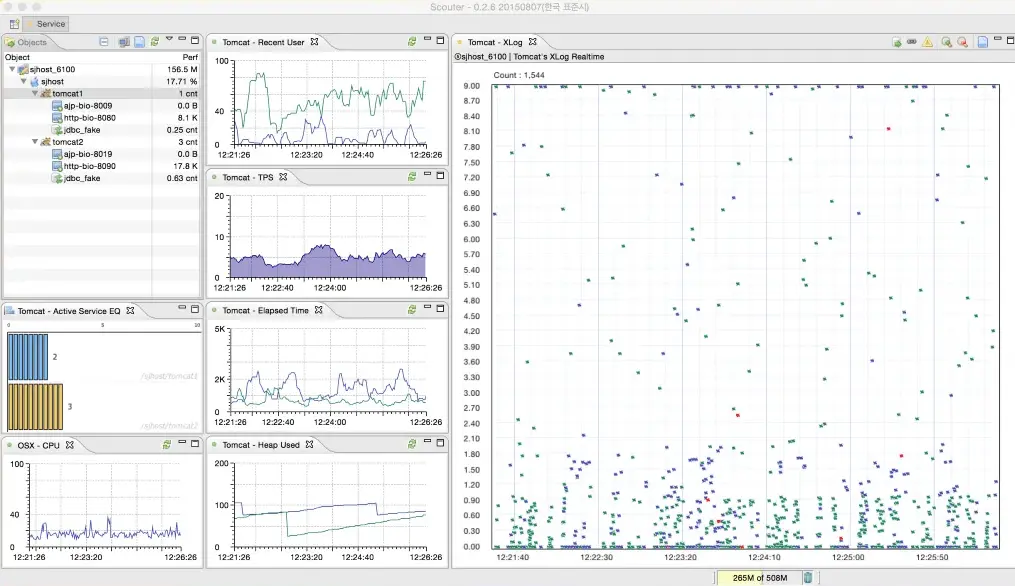
Zipkin is an open source APM tool used for distributed tracing. Zipkin captures timing data need to troubleshoot latency problems in service architectures. In distributed systems, it's a challenge to trace user requests across different services. If a request fails or takes too long, distributed tracing helps to identify the events that caused it.
Zipikin was initially developed at Twitter and drew inspiration from Google's Dapper. Unique identifiers called Trace ID are attached to each request which then identifies that request across services.
Zipkin's architecture includes:
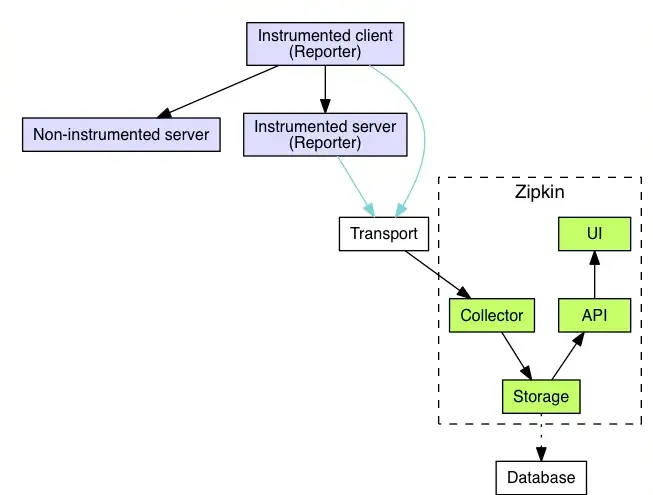
Zipkin's in-built UI is limited, and you can use Grafana or Kibana from the ELK stack for better analytics and visualizations.
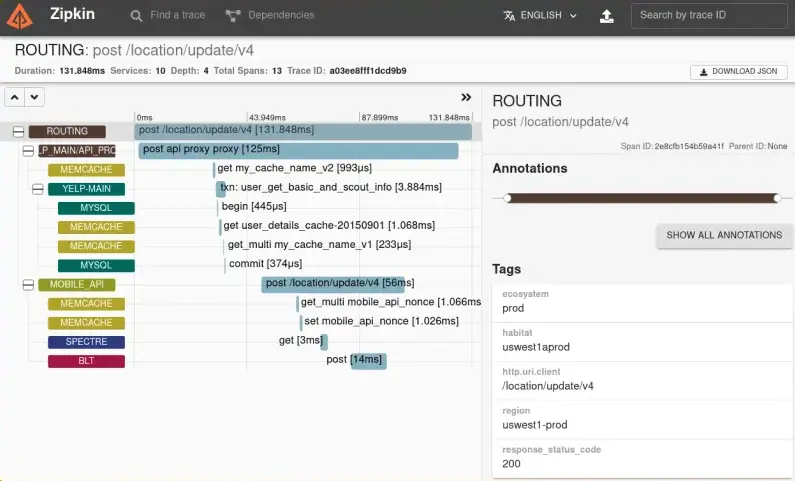
It also includes a dependency diagram that shows how many user requests went through each service. It can help you to identify error paths and calls to deprecated services.
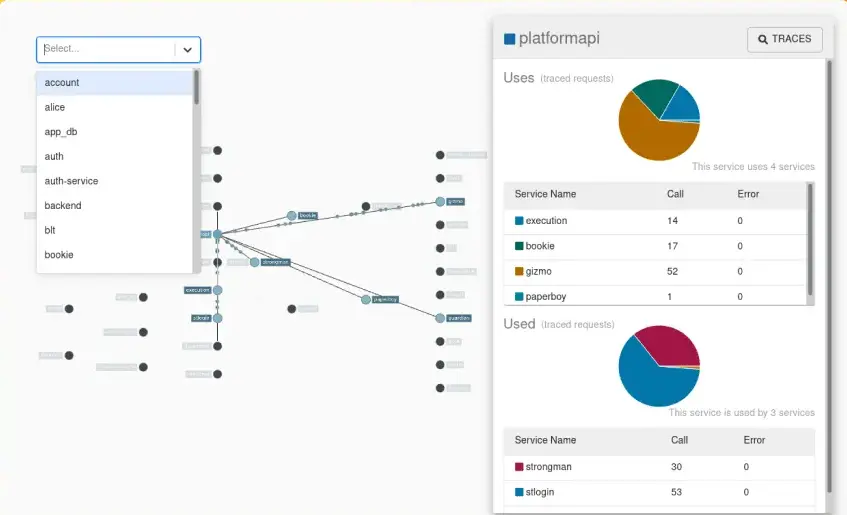
Jaeger is an open source APM tool developed at Uber, which was later donated to Cloud Native Computing Foundation(CNCF). Inspired by Google's Dapper, Jaeger is a distributed tracing system.
It is used for monitoring and troubleshooting microservices-based distributed systems. Some of its key features include:
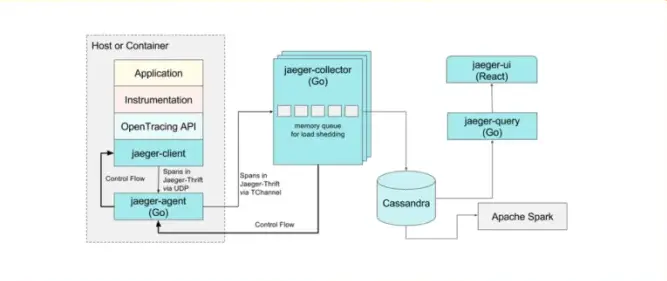
Jaeger supports two popular open source NoSQL databases as trace storage backends: Cassandra and Elasticsearch. Jaeger's UI can be used to see individual traces. You can also filter the traces based on service, duration, and tags.
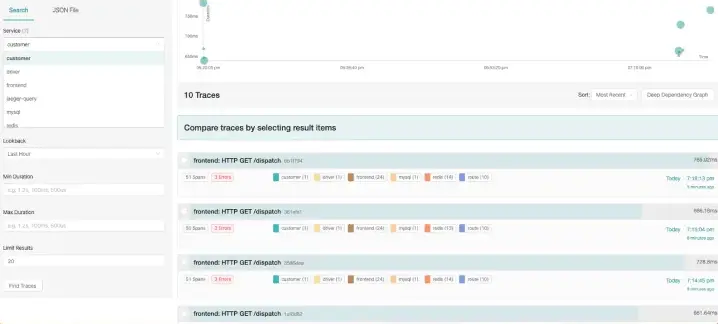
This open source APM tool is focused on monitoring distributed systems, including microservices, cloud-native, and container-based architectures. Some of the key features of the APM tool includes:
Skywalking also supports the collection of telemetry data in multiple formats.
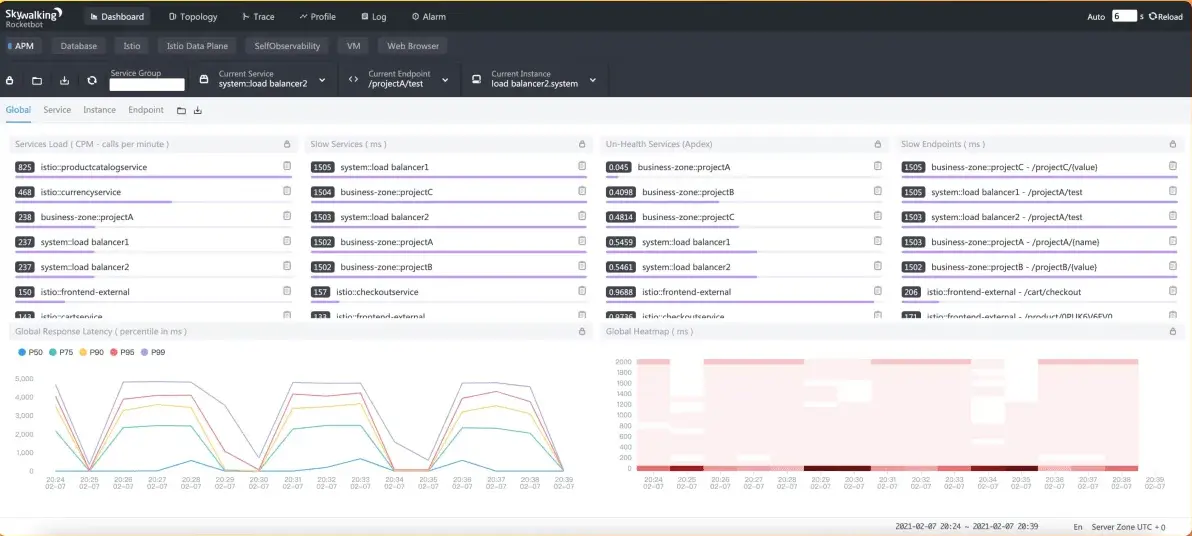
You might already be familiar with Elasticsearch. Elastic APM is an open source application performance monitoring tool built on top of the ELK stack (Elasticsearch, Logstash, Kibana). It consists of 4 main components:

With Kibana, you can have visualize your requests and services.
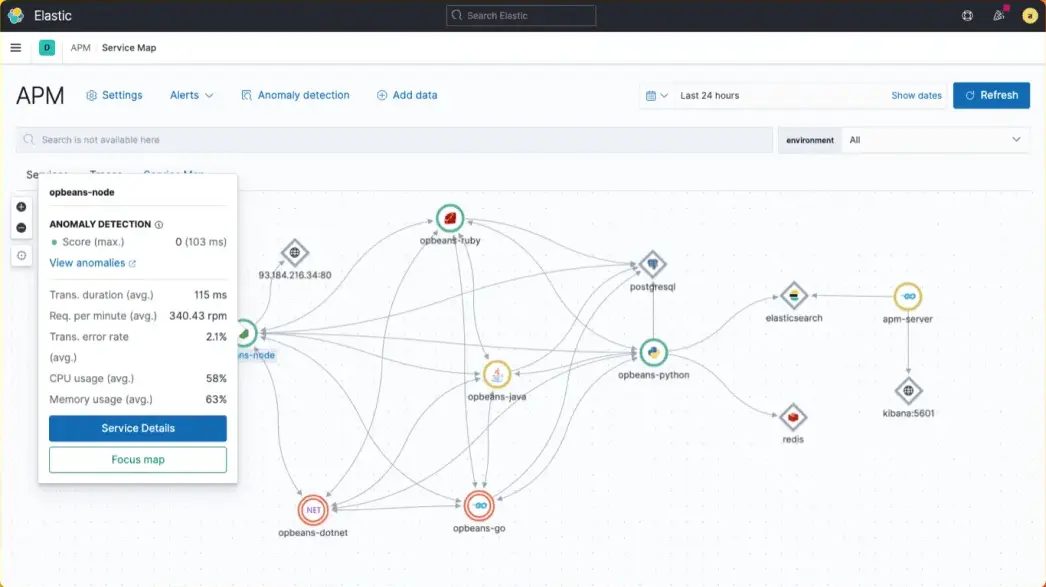
App Metrics is an open source and cross-platform .NET library that can be used to capture application metrics within any .NET application. App Metrics provides extensions to report to various open source time-series databases. It also provides dashboards to visualize application metrics in real-time. Some of the key features of this open source APM tool includes:
App Metrics does not include a visualization tool, but it does provide App Metrics specific Grafana dashboards.
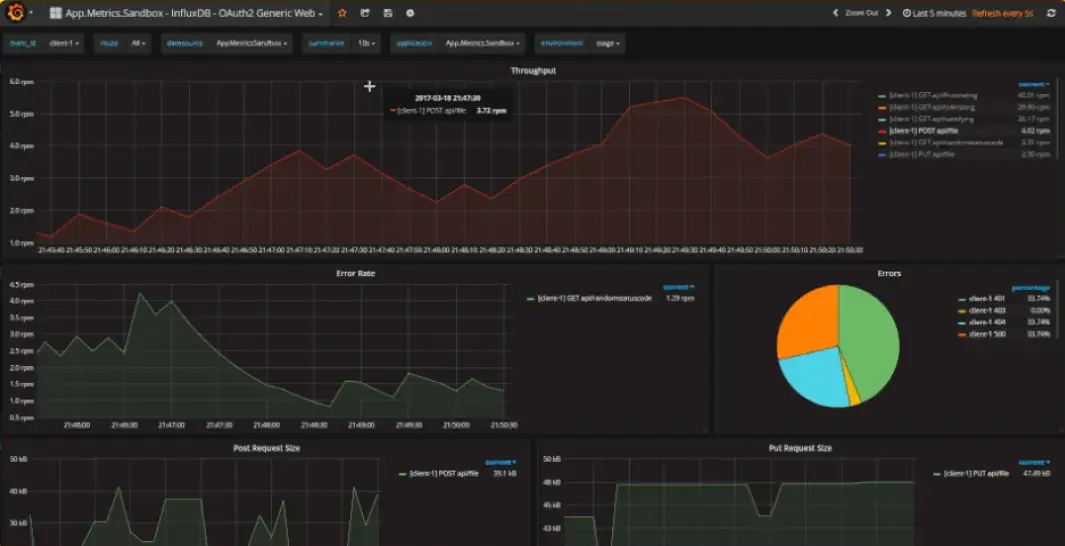
Glowroot is an open source Java APM tool. It is used to monitor Java-based applications. Glowroot can be implemented in two ways:
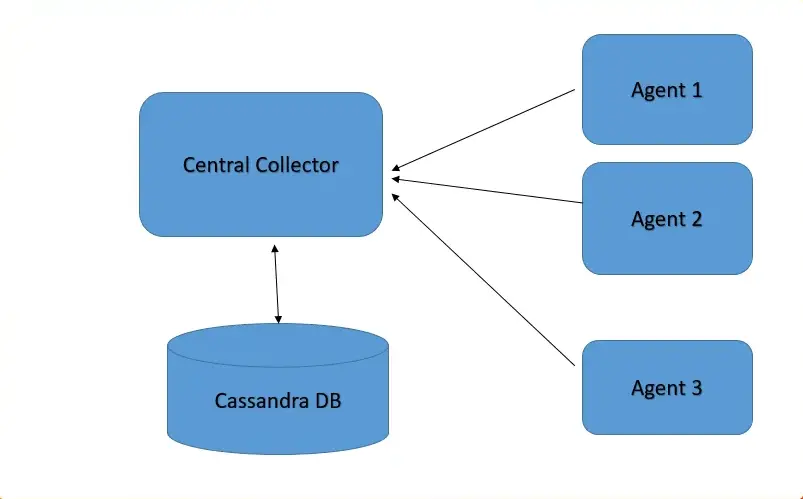
Glowroot agents help to capture metrics like:
How to choose the right open source APM tool for you?
Choosing the right open source APM tool is critical to your team's ability to monitor and troubleshoot issues in your deployed application. If you are going for an open source tool, you must ensure that the tool is being actively developed on GitHub. You can ask yourself the following questions before choosing any open source tool:
But this is just one aspect. Another aspect is whether the tool serves all your needs for application monitoring or not. You don't want your team to manage multiple tools for end-to-end visibility into the performance of your apps.
Logs, metrics, and traces form the three cornerstones of full-stack APM tools. In that scenario, a tool like SigNoz can serve all your needs for application monitoring. As the instrumentation is based on OpenTelemetry, you also have the added advantage of not being locked into any product.
Getting started with SigNoz

SigNoz cloud is the easiest way to run SigNoz. Sign up for a free account and get 30 days of unlimited access to all features. You can also install and self-host SigNoz yourself since it is open-source. With 18,000+ GitHub stars, open-source SigNoz is loved by developers. Find the instructions to self-host SigNoz.
Further Reading